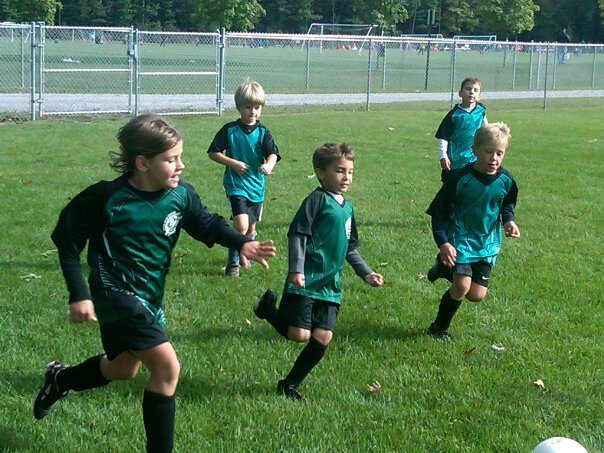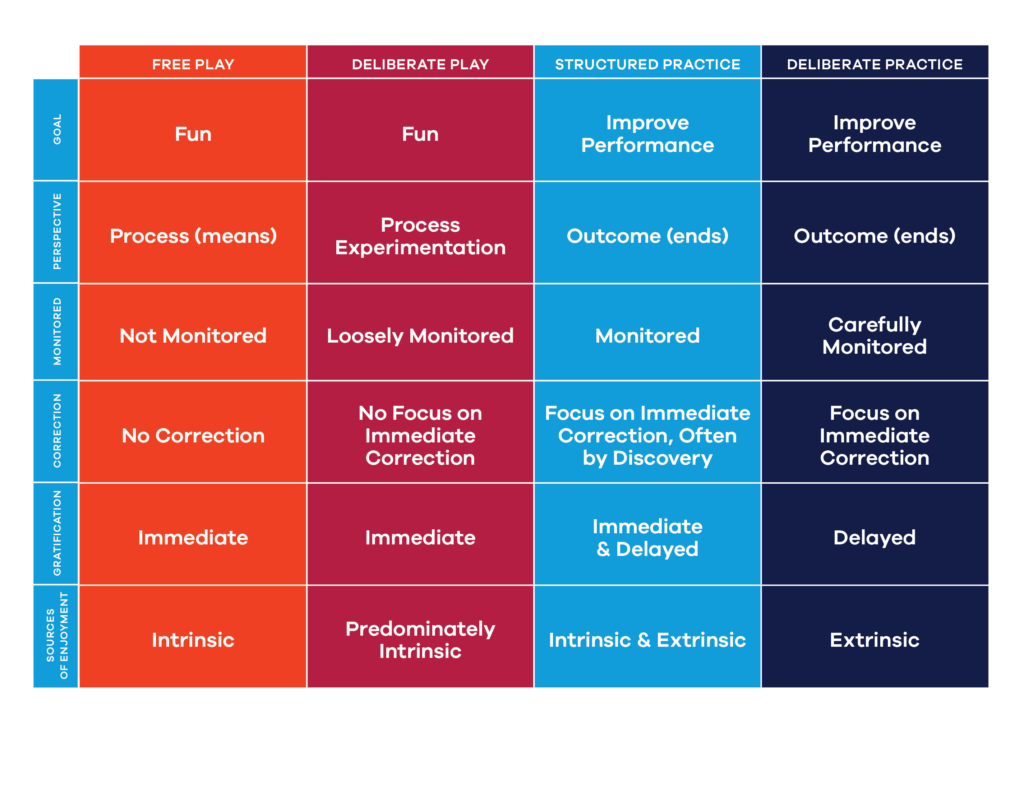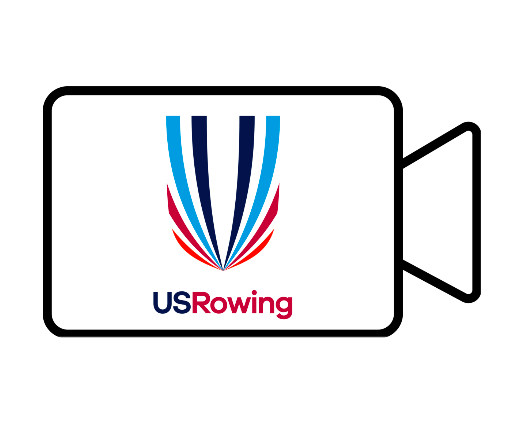STAGE 1 - Discover, Learn, Play
Chronological Age: 4 – 12
Target Audience: Youth or first introduction to rowing regardless of age
Stage 1 rowers are just beginning to experience sports, rowing, and waterways. Developing foundational motor skills and learning key concepts are critical, particularly given their transferability to other sports and life more broadly. We highly encourage exploring multiple sports, which helps develop more adaptable and flexible athletes. This is a period of natural growth and experimentation, which coaches should foster by creating a fun environment and supporting multi-sport athletes.
Stage 1 does not usually include Olympic-style flatwater rowing, principally because access to age-appropriate rowing equipment is not yet common. Children should not row boats designed for teenagers and adults. Coaches and parents should focus on developing fundamental movement skills and getting kids excited about sports! The best foundation for athletes in this stage is facilitating a love of the outdoors, learning how to swim, developing basic motor skills, introducing them to paddle sports.
Effective and safe training programs for Stage 1 rowers must reflect their individual characteristics, including chronological age, developmental age, and general athletic experience. The type, duration, intensity, and frequency of training sessions will vary considerably depending on these factors and are covered in more detail below.
Concepts
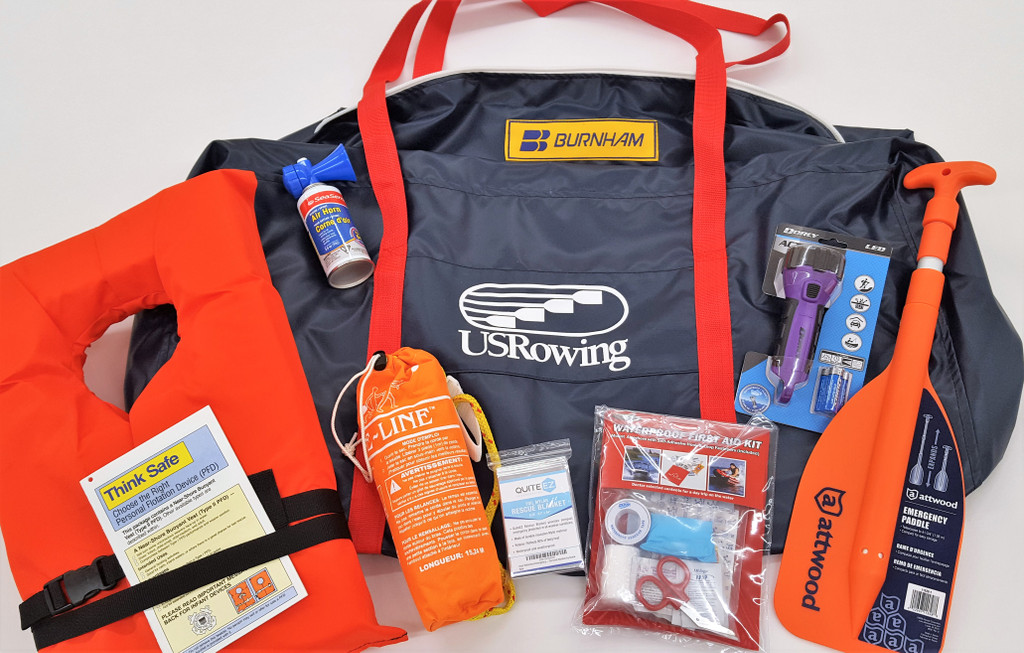
UNDERSTAND RULES AND TECHNIQUES OF THE SPORT
Rowing has a long list of skills and knowledge necessary to participate safely in the sport – this includes knowing how to navigate a variety of waterways and how to respond in an emergency. It is critical that all athletes watch the USRowing safety video and are familiar with their club’s emergency procedures.
Stage 1 rowers should also learn basic technique and know the different phases of the stroke cycle.
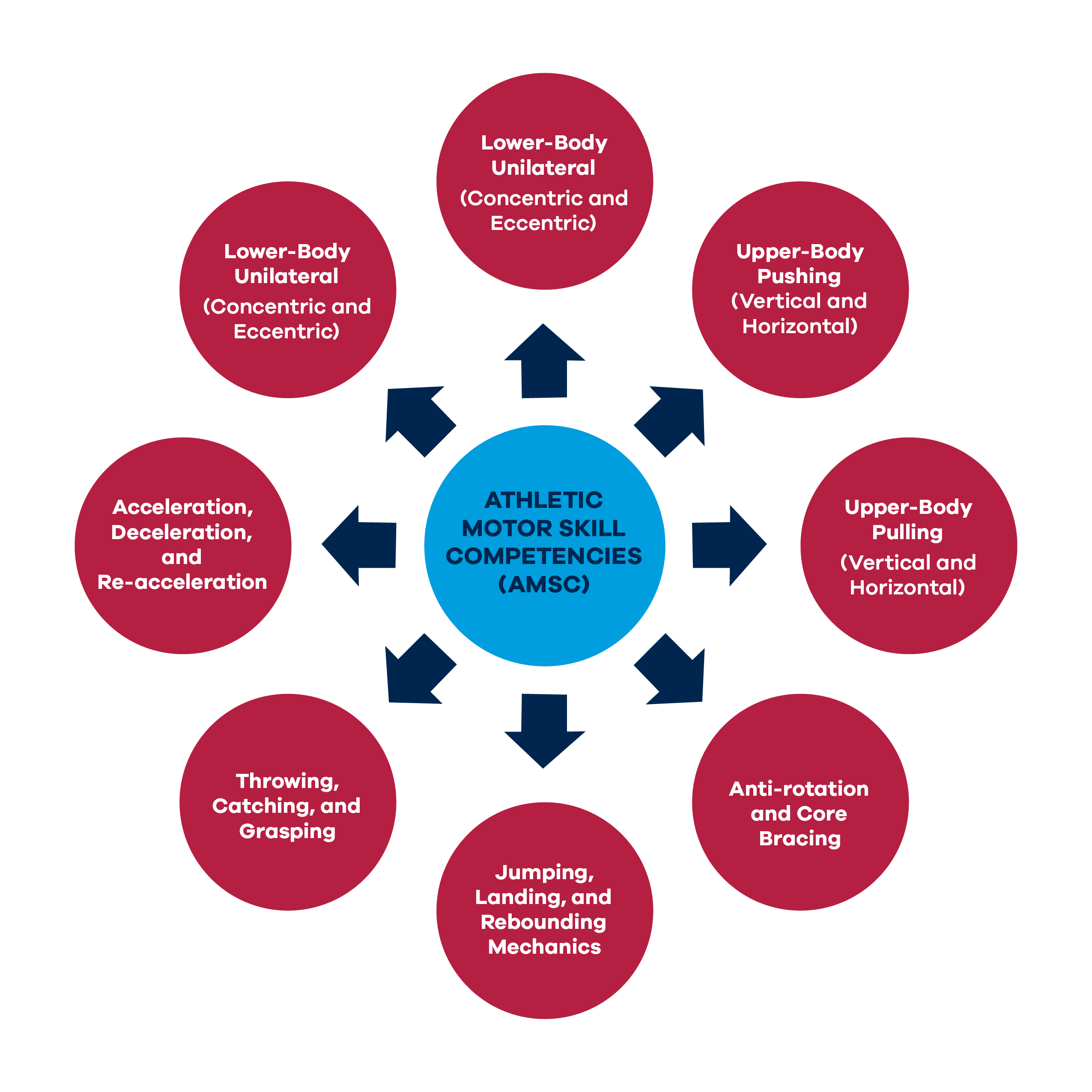
DEVELOP MOTOR SKILLS THAT TRANSFER FROM SPORT TO SPORT
Youth sports training should focus on development of major athletic motor skill competencies (AMSC): (1) lower body unilateral, (2) lower body bilateral, (3) upper body pushing, (4) upper body pulling, (5) anti-rotation and core bracing, (6) jumping, landing, and rebound mechanics, (7) throwing, catching, and grasping, (8) acceleration, deceleration, and reacceleration. See the strength training section below for more information on land-based AMSC development.
(Click the image on the left to view the full scale version)
Foundations
Stage 1 rowers who do not have access to age-appropriate equipment can learn foundational skills, including how to navigate waterways safely (i.e., right-of-way and basic directional navigation) and boat movement through other paddle sports.
Coaches should avoid overregulating rower’s technique and movement (i.e., implementing a segmented stroke style) and instead provide the athlete with simple directives and room to experiment so they can discover the rowing stroke at their own pace.
Stage 1 rowers who do have access to age-appropriate rowing equipment and coaching can also begin Olympic-style rowing skill development. Several manufacturers make boats and oars specifically for this age group. Check with your local boat reps for available youth rowing options.
The rowing movement is complex. Stage 1 rowers in particular should practice the rowing stroke with additional observation and support. For instance, stern holds – where a coach stands in the water or leans off the dock and holds the stern of the rowing shell to provide stability and instruction for a rower – are very helpful for Stage 1 rowers.
Trying out different sports allows Stage 1 rowers to find the activities that light a passion within them, which promotes future success. Even if rowing ultimately becomes their primary sport activity, experiencing other sports contributes to better short-term motor learning and long-term athletic development and success. The rowing movement requires significant motor coordination and attention, so Stage 1 rowers who learn to move their body through space, anticipate movements, and improve eye-hand coordination are likely to become better rowers.
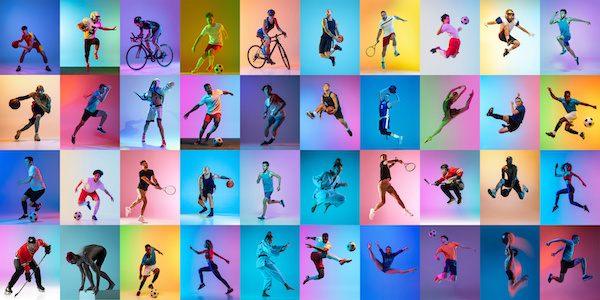
Stage 1 rowers should participate in other sports and give focus to skill development, sport education, and age-appropriate play specific to these non-rowing contexts. The learning curves for most sports are similar, so the general athletic abilities Stage 1 athletes develop will translate to rowing in Stage 2 and Stage 3.
Skill Development:
Skill development for the Stage 1 rower hinges on feel and comfort in the water and maneuvering the boat. Technical skill development should be fun and focused on body movement rather than power outputs, boat speed, or training time. Stage 1 rowers may row continuously for up to 15 minutes at a time. Shorter practices that incorporate play activities improve engagement, productivity, and offer necessary variety.
Sport Education:
Learning how to use and treat rowing equipment is a critical component of our sport. Stage 1 athletes with age-appropriate rowing equipment should learn how to use the sliding seat, foot stretchers, riggers, oarlocks, etc., how to carry shells and oars, and how to launch, takeout, and clean a boat. Stage 1 athletes should help each other when carrying age-appropriate boats.
From the beginning, coaches should use standard technical terms and commands when addressing the athletes. Coaches must continue to monitor the placement of the oars, sculls, and foot stretchers.
Stage 1 athletes should be introduced to the environmental features of the area, including weather patterns and water traffic rules. Most importantly, athletes and coaches should be trained how to get back into the boat if it flips.
Stage 1 athletes may move to Stage 2 after age 10. Stage 2 exists for the 10-12-year old rower who intends to be a competitive rower in Stage 3, as well as for the 10-18-year old rower who chooses to row for physical recreation and personal fitness.
Stage 2 – Participate, Develop, Challenge
Foundations
Stage 1 rowers who do not have access to age-appropriate equipment can learn foundational skills, including how to navigate waterways safely (i.e., right-of-way and basic directional navigation) and boat movement through other paddle sports.
Coaches should avoid overregulating rower’s technique and movement (i.e., implementing a segmented stroke style) and instead provide the athlete with simple directives and room to experiment so they can discover the rowing stroke at their own pace.
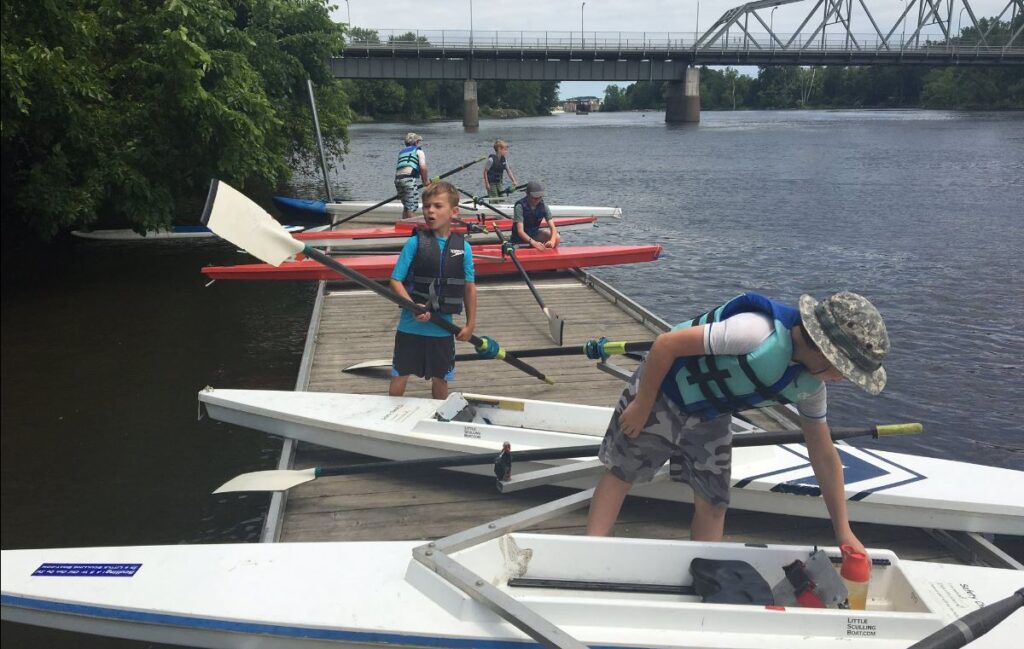
Stage 1 rowers who do have access to age-appropriate rowing equipment and coaching can also begin Olympic-style rowing skill development. Several manufacturers make boats and oars specifically for this age group. Check with your local boat reps for available youth rowing options.
The rowing movement is complex. Stage 1 rowers in particular should practice the rowing stroke with additional observation and support. For instance, stern holds – where a coach stands in the water or leans off the dock and holds the stern of the rowing shell to provide stability and instruction for a rower – are very helpful for Stage 1 rowers.
Trying out different sports allows Stage 1 rowers to find the activities that light a passion within them, which promotes future success. Even if rowing ultimately becomes their primary sport activity, experiencing other sports contributes to better short-term motor learning and long-term athletic development and success. The rowing movement requires significant motor coordination and attention, so Stage 1 rowers who learn to move their body through space, anticipate movements, and improve eye-hand coordination are likely to become better rowers.
Stage 1 rowers should participate in other sports and give focus to skill development, sport education, and age-appropriate play specific to these non-rowing contexts. The learning curves for most sports are similar, so the general athletic abilities Stage 1 athletes develop will translate to rowing in Stage 2 and Stage 3.
Skill Development:
Skill development for the Stage 1 rower hinges on feel and comfort in the water and maneuvering the boat. Technical skill development should be fun and focused on body movement rather than power outputs, boat speed, or training time. Stage 1 rowers may row continuously for up to 15 minutes at a time. Shorter practices that incorporate play activities improve engagement, productivity, and offer necessary variety.
Sport Education:
Learning how to use and treat rowing equipment is a critical component of our sport. Stage 1 athletes with age-appropriate rowing equipment should learn how to use the sliding seat, foot stretchers, riggers, oarlocks, etc., how to carry shells and oars, and how to launch, takeout, and clean a boat. Stage 1 athletes should help each other when carrying age-appropriate boats.
From the beginning, coaches should use standard technical terms and commands when addressing the athletes. Coaches must continue to monitor the placement of the oars, sculls, and foot stretchers.
Stage 1 athletes should be introduced to the environmental features of the area, including weather patterns and water traffic rules. Most importantly, athletes and coaches should be trained how to get back into the boat if it flips.
Stage 1 athletes may move to Stage 2 after age 10. Stage 2 exists for the 10-12-year old rower who intends to be a competitive rower in Stage 3, as well as for the 10-18-year old rower who chooses to row for physical recreation and personal fitness.
For more detailed information, please download
Resources
Youth Development Programming – Proven Models of Success
Youth Development Programming – Proven Models of Success
